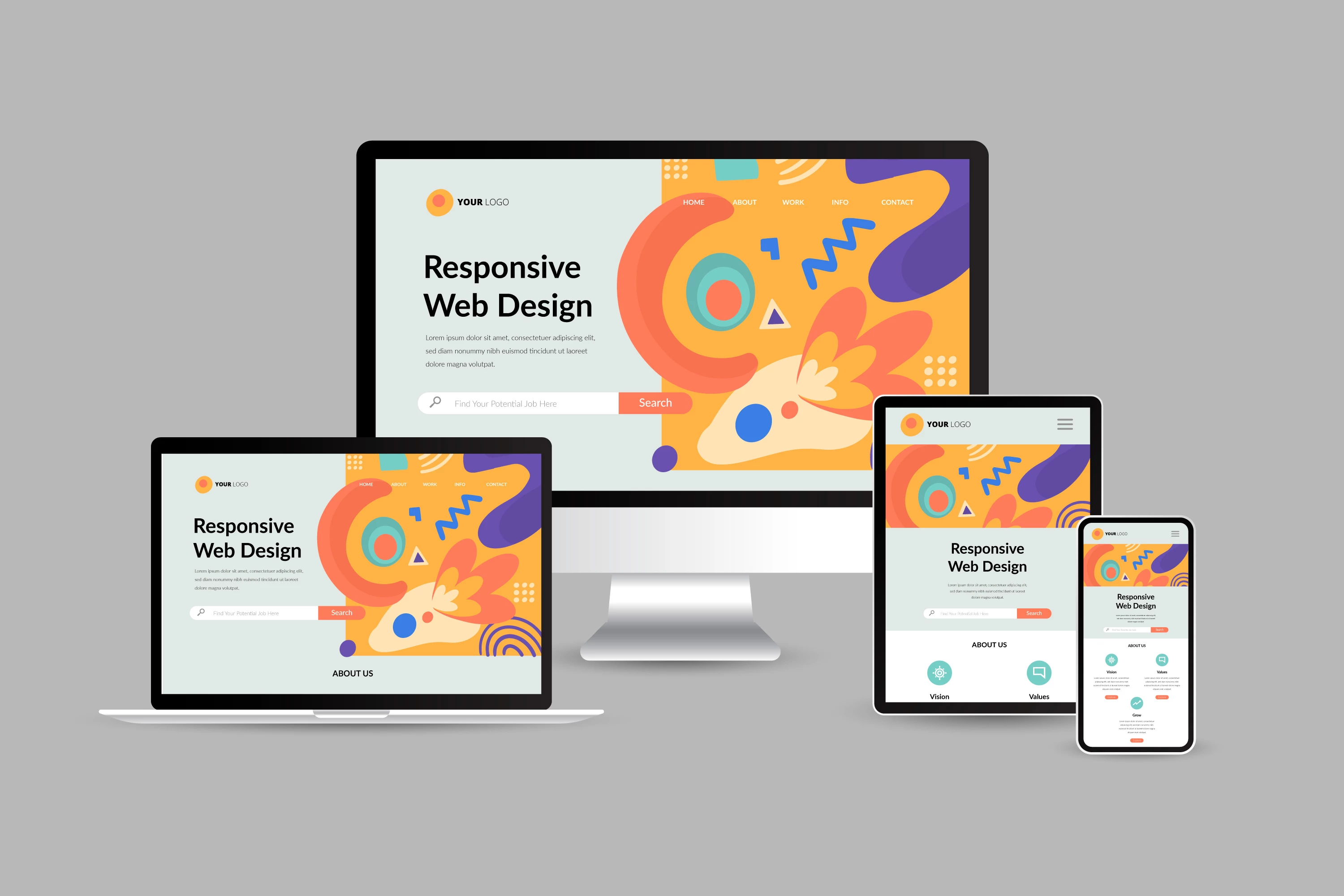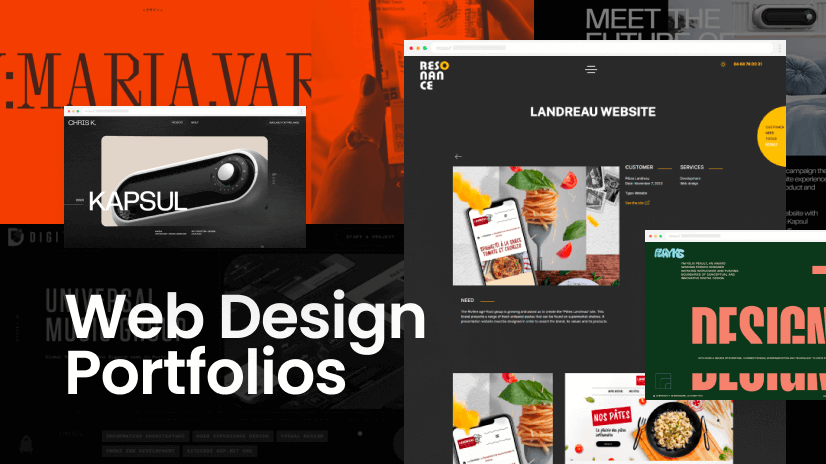Change Your Brand with Cutting-Edge Website Design Methods
Wiki Article
The Impact of Aesthetic Appeals and Capability in Successful Site Design Projects
An aesthetically compelling design is even more than simply a banquet for the eyes; it sets the stage for user interaction and brand name trust. Without seamless functionality, even the most magnificent design can falter, leaving users disengaged and annoyed.Value of Visual Allure
In the world of internet site design jobs, visual appeal is a vital aspect that dramatically influences user engagement and perception. A properly designed site not only attracts site visitors however additionally develops a brand's integrity and professionalism. The visual elements, including layout, shade plan, typography, and images, play a pivotal duty in catching attention and sharing the brand name's message effectively.Research study indicates that customers create an impression of a website within seconds, making looks a crucial consider keeping visitors. An aesthetically attractive website makes certain that customers are not bewildered or puzzled, which can cause high bounce rates. Website Design. Instead, an unified and thoughtfully crafted layout encourages users to discover additionally
Moreover, uniformity in design elements throughout pages promotes a natural experience, enhancing brand name identification. The selection of colors and font styles need to straighten with the brand name's ethos, while pictures need to be high-grade and appropriate to boost the message as opposed to distract from it. Aesthetic hierarchy is likewise essential, assisting individuals' emphasis to vital information with strategic positioning and sizing of elements.
Eventually, the value of visual allure in web site layout can not be overstated. It is the structure upon which customer trust and involvement are built.
Enhancing Individual Experience
Just how does one make certain that a web site not only captivates but likewise serves its users efficiently? The crucial depend on improving individual experience (UX), an important element of contemporary web layout. A well-designed UX structure concentrates on understanding individual choices, actions, and demands to create an intuitive, smooth interaction. Reliable individual experience design starts with detailed research to identify the target audience and their particular needs, making sure that the web site web content and design straighten with customer expectations.Use is a cornerstone of boosting UX, emphasizing convenience of navigation and ease of access. Instinctive interfaces enable individuals to locate info effortlessly, minimizing aggravation and motivating long term engagement. Incorporating responsive style principles makes sure that websites function efficiently throughout various tools, providing to users on tablets, desktop computers, and mobile phones alike.
In addition, incorporating feedback systems gives valuable insights right into individual interactions, enabling continuous improvement. By evaluating and collecting user responses, developers can make educated adjustments to boost fulfillment and use.
Inevitably, enhancing customer experience not just cultivates customer fulfillment however also adds to accomplishing company objectives, such as boosted conversion prices and client loyalty, thus ensuring the internet site's long-term success.
Balancing Form and Function

To accomplish this balance, developers must consider the visual hierarchy, ensuring that essential aspects are highlighted without overwhelming the customer. Color pattern, typography, and imagery must be chosen very carefully to evoke the preferred psychological response while keeping readability and accessibility. Website Design. Concurrently, functionality needs that navigating is user-friendly, with clear calls-to-action guiding users effortlessly with the website
Responsive style is another important element, guaranteeing that the web site performs well on numerous gadgets and screen dimensions. Loading speed and efficiency are additionally important; a cosmetically pleasing website must not give up speed and efficiency, as individuals swiftly dislike slow-loading pages.
Ultimately, successful website layout requires an alternative technique that incorporates type and function, ensuring that the website is both reliable and attractive in meeting customer requirements and organization objectives.
Brand Understanding and Count On
Brand name perception is an essential element that forms exactly how individuals engage with a website. In today's digital landscape, a website commonly acts as the go to this web-site first point of contact between a brand and its audience. Thus, the functional and visual design of the website considerably influences the individual's perception of the brand. A properly designed website that aligns with the brand name's looks and values can cultivate a positive perception, boosting brand name loyalty and developing a connection with the audience.Count on is one more crucial factor in web site design, as customers are most likely to involve with a brand name they take into consideration legitimate and reputable. Trust can be check out here established through transparent design aspects such as clear navigation, professional graphics, and regular branding. Including components like customer reviews, clear contact info, and safe payment portals can improve trustworthiness.
A seamless individual experience, identified by instinctive navigating and rapid packing times, also adds to developing depend on and a desirable brand name assumption. In general, the elaborate balance in between looks and performance is important in crafting an internet site that not only mesmerizes but likewise sustains the user's depend on, thereby strengthening the brand's reputation in an affordable market.
Gauging Design Efficiency
Reviewing design efficiency is an essential element of analyzing a website's success in fulfilling its intended goals. This process involves a series of measurable and qualitative metrics that offer understandings into exactly how well a site carries out in terms of customer experience, involvement, and conversions. Secret efficiency indications (KPIs) such as bounce rate, time on website, and conversion rate are important metrics that provide a picture of user behavior and interaction with the site.
Individual responses and usability testing are crucial qualitative actions that expose just how user-friendly and easy to use the layout is. These methods assist determine areas where customers encounter troubles, enabling designers to make educated renovations. Heatmaps and session recordings additional complement these insights by revealing exactly how users browse via the website, highlighting locations of passion and friction.
In addition, A/B testing is a reliable technique for gauging layout efficiency. By comparing different layout components or formats, businesses can identify which variations yield far better performance end results. Inevitably, a thorough strategy that combines both user-centered evaluations and data-driven metrics makes certain that a web site not only fulfills visual criteria important source but likewise properly meets its practical purposes, driving sustained user satisfaction and organization success.
Conclusion
In successful internet site layout projects, looks and functionality play pivotal functions in shaping customer experience and brand perception. Eventually, the harmonious equilibrium between kind and feature dramatically adds to an internet site's performance, making sure sustained interaction and trust fund from individuals.
Visual appeals attract individuals in, creating an initial impact that records interest, while performance makes sure that customers can intuitively navigate the site, find info, and complete jobs without frustration.
Thus, the practical and aesthetic style of the website significantly affects the user's perception of the brand.Depend on is one more essential variable in website design, as customers are more most likely to involve with a brand name they consider qualified and trustworthy.In successful website design tasks, appearances and performance play critical roles in forming customer experience and brand name perception.
Report this wiki page